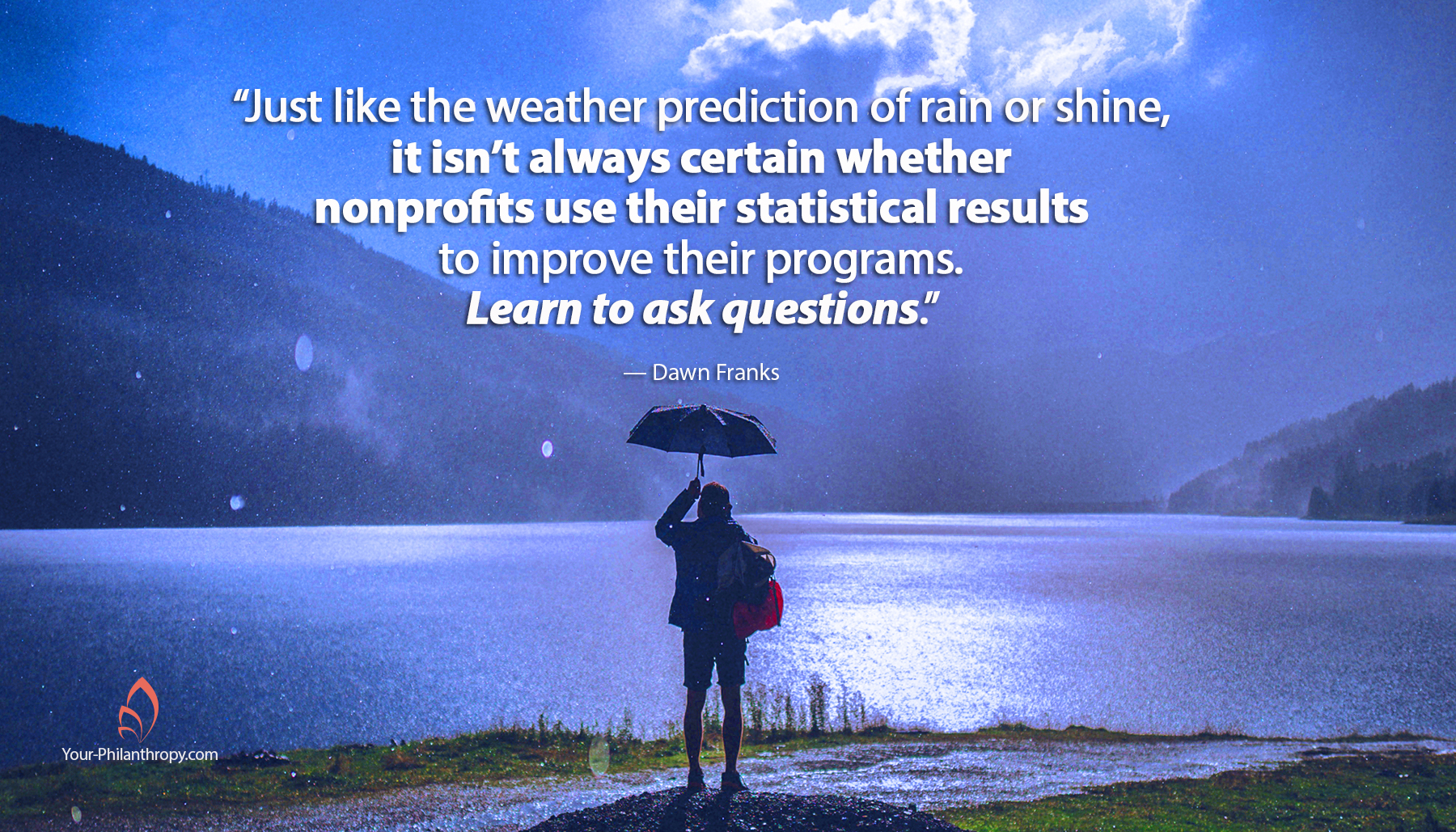I paused the television briefly to catch the week’s weather prediction. I was trying to figure out exactly what to expect. It said 30% hit or miss showers.
I’m often confused about the percentages for the rain forecast – will the rain hit me or miss me?
Years ago, a friend informed me that the expected rain percentages were based on the size of the viewing area according to her local weatherman. That began to give me a new perspective for calculating the weather more accurately.
Fast-forward 25 years today where we can do our own weather research. I started wanting to know the difference between terms like spotty, hit or miss, isolated and scattered. After nearly an hour checking out various sources I can say my understanding now is scattered with some isolated pockets of clarity, but for the most part, it is still spotty.
What I did learn was that my friend got it nearly right when she said it was about geographic coverage. What was missing in her explanation was that it also includes a particular period, usually twelve hours, and the degree of confidence the forecaster has in the prediction. All that results in a mathematical formula which creates a nearly useless percentage-based prediction.
There are just too many factors going into the equation to make it useful to us.
We can add to our confusion with the results of a 2015 study published by the University of Georgia, “Through the Eyes of the Experts: Meteorologists’ Perceptions of the Probability of Precipitation.” It indicated less than 10% of meteorologists surveyed believed the definition of “probability of precipitation” is consistent when used by meteorologists. No wonder we’re confused and think they’re always wrong.
Plus, the study reported three-quarters of the population lack an accurate understanding of the term. Three-fourths of us make plans around what the weather might or might not do based on a prediction model we don’t understand.
It strikes me that this same kind of statistical confusion is present when we read about a favorite nonprofit. I often experience confusion about the success of a program or an organization I am reading about whether in a newspaper article, their newsletter or their fundraising letter. When the organization tosses out statistics about their success, I always have questions. Questions matter. (Read one of my past blogs how questions can lead to making a better gift.)
Just like the weather prediction of rain or shine, it isn’t always certain whether nonprofits use their statistical results to improve their programs. Learn to ask questions.
So, here are a few lessons I’ve learned about statistics from nonprofit organizations to help you better understand their findings and predictions.
- Percentages are only meaningful if you know the starting number or the total number of participants. Eighty percent of 1,000 is 800, while 80 percent of 10 is only 8. Both are accurate but could change how you think about donating to the organization.
- Percentages that show up in articles and letters should be considered a starting place for a conversation to truly understand the results of their work. The larger the donation you intend to make the more important it is to explore the meaning of the numbers with someone in the know at the organization.
- When the professional leadership of an organization can explain the percentages and how they are using them to adapt for even more success, you’ve got a winner. Annual statistics can be gathered year upon year with no end in mind, or they can be studied with intent to make programs and client success the best possible with available funding.
- Finally, don’t give up on small organizations just beginning to figure all this out, but keep asking them questions. It will help them improve the organization and most importantly the end-result for those they serve.
All this is true whether we’re talking about people, animals, parks or historic buildings. Take a closer look at the statistics you are reading or hearing from your favorite nonprofit and keep asking questions. You will increase your odds of being informed. Do you have more questions about this topic? If so, let’s talk about it!


0 Comments